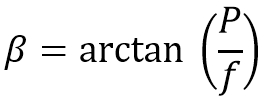section-6471134
Explanations about the result are below the tool.
section-4d3daf8
Correct pixel shifting using dithering
The purpose of dithering is that during image processing, artifacts such as hot pixels (which have not been removed by dark frames), walking pattern noise, and other types of noise can be better detected and removed from the stacked image. So dithering is a very useful approach to improve image quality.
In dithering, a subsequent image is shifted by a few pixels relative to the previous one. Since in stacking the images are aligned according to the stars, such a shift makes the above-mentioned fixed artifacts visible. The aligned stars are on top of each other, but the faulty pixels now have an offset and can thus be corrected by the processing software.
Depending on the exposure time, it is advisable to perform dithering after each exposure. With very short exposure times, it is advisable to shift the next image by a few pixels only after a certain number of frames, since the dithering process takes some time. The telescope is moved by the desired pixel value by using the guiding camera and must then "settle" again, so that possible vibrations are not transferred to the following image.
The dithering process is controlled by the guiding optics. However, since the guiding optics usually do not have the same resolving power as the main optics, the main camera image will not shift by the same number of pixels. So to set the correct dither value in the software to shift the main image by a desired number of pixels, the tool listed here should help.
Usually it is enough to move the main image by 5 to 20 pixels. The number depends on the star size on the image. The goal is to shift by at least one star size. A value of about 10 pixels is usually sufficient here. But the larger the slewing range is, the more time is needed for the travel and the "settling" of the telescope.
To determine the dither value to be entered correctly in the imaging / guiding software, the image scales β of the two optics and the respective dither values are multiplied and equated.
![]()
The image scale is calculated as listed under the menu point 'Basics' - 'Telescope-camera-combination' - 'Image Scale':

β – image scale in [°]
P – pixel size in [µm]
f – telescope focal length
Thus, the result is:

From this follows for the dither value DG of the guiding optics to be set:
